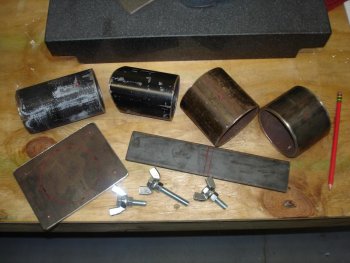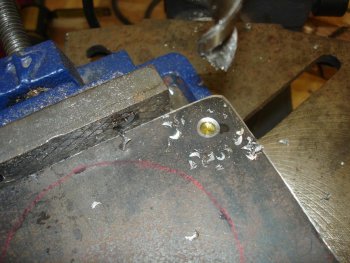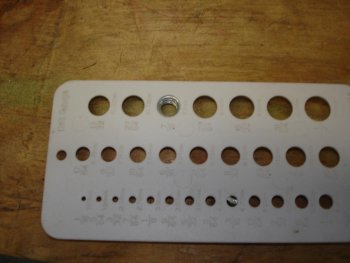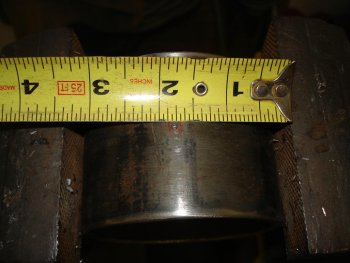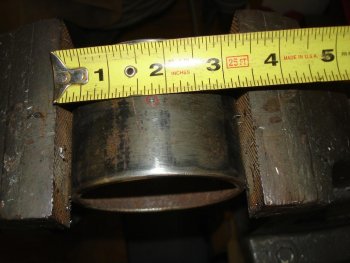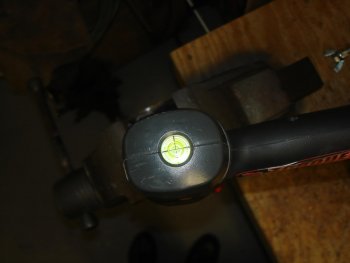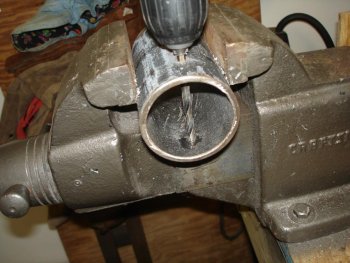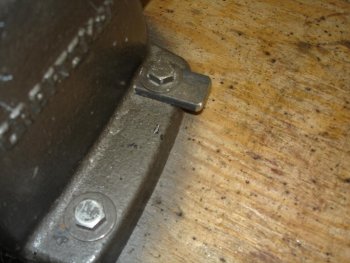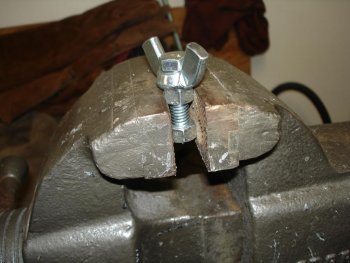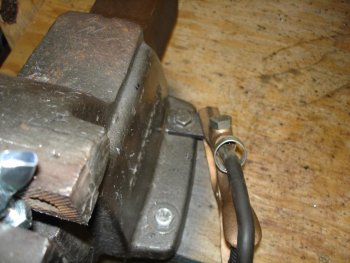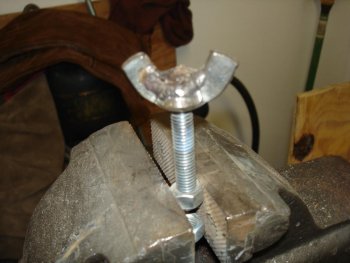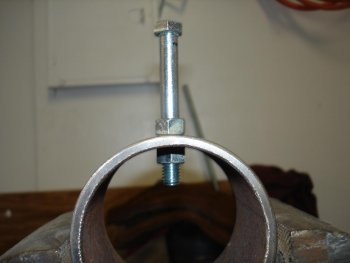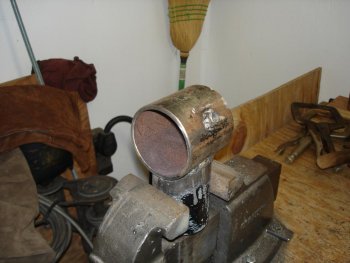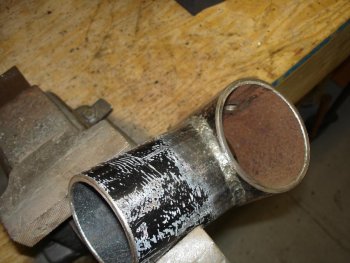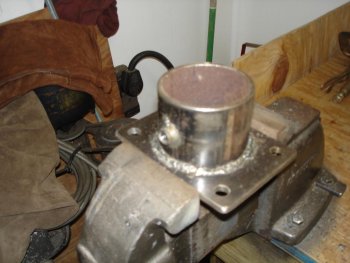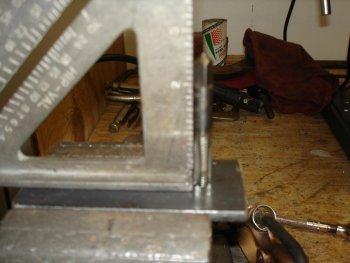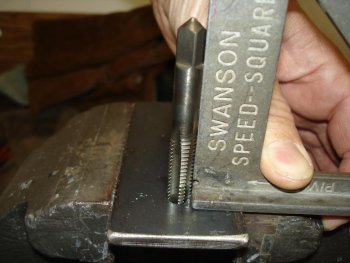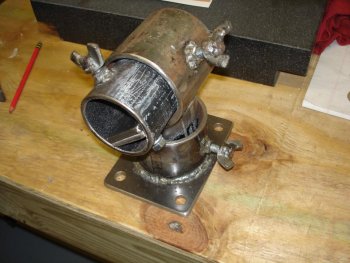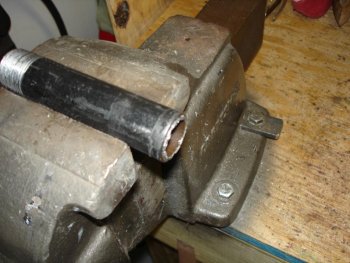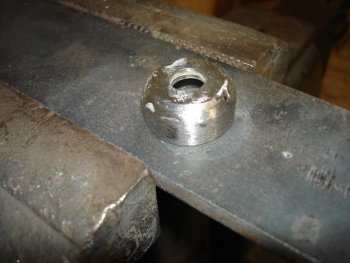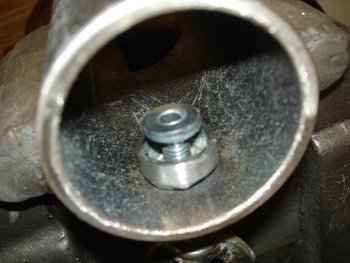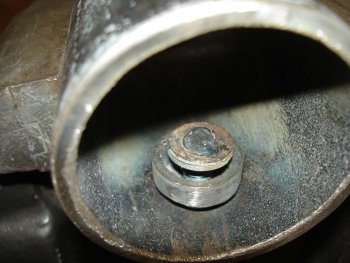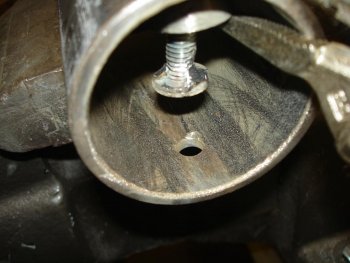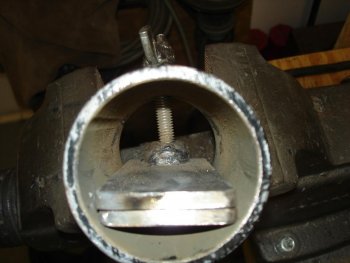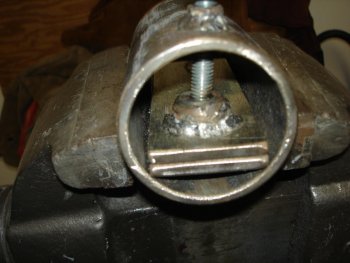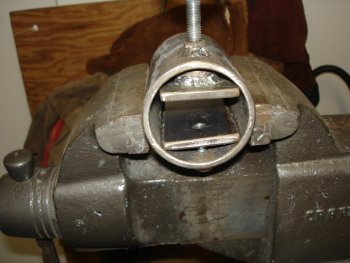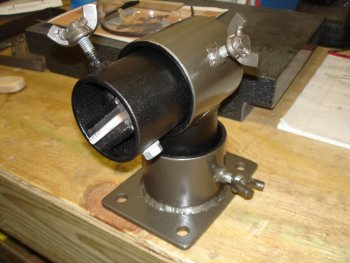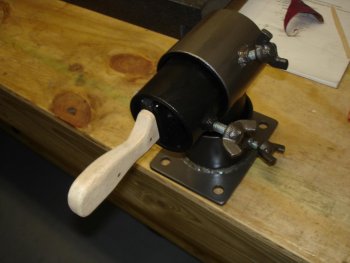Mike Barton
Well-Known Member
After seeing a few other makers use different versions of a Knifemakers Vise, I decided to fabricate my own from the best example I could find. I joined the Knifedogs forum and shortly after Tracy posted the new Knifemakers Vises he was adding to his US Knifemaker online store, I knew I had found my inspiration. After a asking few questions, Tracy was most generous to answer, I fabricated a working Knifemakers vise.
Tracy wanted me to post a picture of the vise when finished and I went overboard and took pictures throughout the build. I wish to thank Tracy for his generosity in letting me post this tutorial on building my clone of his Knifemakers Vise on this forum.
Tracy urock1
A quick note on safety, be certain to wear the correct personal protective equipment for whatever equipment and materials you will be working with. Welding needs to be done in a well ventilated area, and any metal that is plated should be stripped bare if possible before welding it. Always wear your eye and hearing protection, your loved ones and friends will thank you for it.
I built this using mostly scrap metal left over from other various projects as I wanted to keep the cost down. I did purchase new hardware and paint from the local home supply warehouse, and the neoprene rubber for the jaw inserts came from an online source.
Here's the list of materials I used:
10 inches of 3" dia. steel pipe for the vise body and frame pivots(heavy wall)
6 inches of 3 1/2" steel pipe for the fixed frame portions(heavy wall)
6" x 4 1/2" of 1/4" steel plate for the mounting base
12 inches of 2" x 1/4" steel plate for the vise jaws
3/8" long piece of 1" steel pipe for the upper jaw position bolt retainer
Two 3/8" flat washers to cap the 1" pipe
One 2 1/2" x 3/8" NC bolt for upper jaw position
Two 5/16" washers to attach to the end of the upper jaw positioner bolt
One 1 1/4" x 3/8"NC bolt for the bottom vise jaw
Two 1 1/2" x 3/8" NC bolts for vise rotation position
Three 7/16" wing nuts to make all bolt heads hand adjustable
12 inches of 2" x 3/16" 40 duro black neoprene rubber for vise jaw inserts
Rustoleum Bronze hammer finish & Black textured paint
Tracy wanted me to post a picture of the vise when finished and I went overboard and took pictures throughout the build. I wish to thank Tracy for his generosity in letting me post this tutorial on building my clone of his Knifemakers Vise on this forum.
Tracy urock1
A quick note on safety, be certain to wear the correct personal protective equipment for whatever equipment and materials you will be working with. Welding needs to be done in a well ventilated area, and any metal that is plated should be stripped bare if possible before welding it. Always wear your eye and hearing protection, your loved ones and friends will thank you for it.
I built this using mostly scrap metal left over from other various projects as I wanted to keep the cost down. I did purchase new hardware and paint from the local home supply warehouse, and the neoprene rubber for the jaw inserts came from an online source.
Here's the list of materials I used:
10 inches of 3" dia. steel pipe for the vise body and frame pivots(heavy wall)
6 inches of 3 1/2" steel pipe for the fixed frame portions(heavy wall)
6" x 4 1/2" of 1/4" steel plate for the mounting base
12 inches of 2" x 1/4" steel plate for the vise jaws
3/8" long piece of 1" steel pipe for the upper jaw position bolt retainer
Two 3/8" flat washers to cap the 1" pipe
One 2 1/2" x 3/8" NC bolt for upper jaw position
Two 5/16" washers to attach to the end of the upper jaw positioner bolt
One 1 1/4" x 3/8"NC bolt for the bottom vise jaw
Two 1 1/2" x 3/8" NC bolts for vise rotation position
Three 7/16" wing nuts to make all bolt heads hand adjustable
12 inches of 2" x 3/16" 40 duro black neoprene rubber for vise jaw inserts
Rustoleum Bronze hammer finish & Black textured paint
Last edited:

